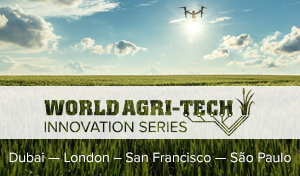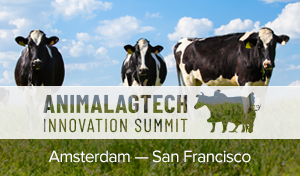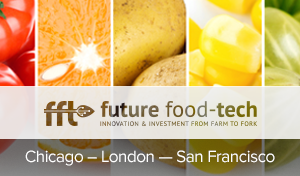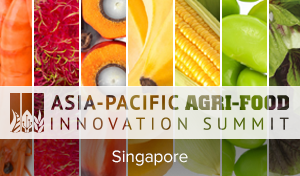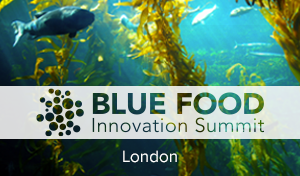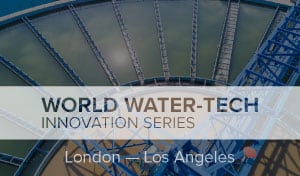What’s on the Program?
Featuring exclusive keynotes, panels, and case studies over a two-day program of high-level discussions, alongside intimate breakout sessions focusing on tangible developments.
Plus breakfast briefings, a dedicated Start-Up Arena spanning an entire floor, interactive roundtables and targeted networking opportunities with agribusinesses, technology giants, food brands, farmers, policymakers, and investors.
NEW FOR 2025: Join the pre-summit day and gain a head start on the networking and knowledge exchange, featuring an AI in Agriculture Forum, XPRIZE Moonshot Workshop and Ginkgo Bioworks Tour.
All times shown in PDT:
Pre-Summit – Monday, March 10
PRE-SUMMIT: Workshop, Forum & Tour
Read more
1:00-6:30pm
AI in Agriculture Forum
Preparing for the AI Revolution from Seed to Shelf
Join this in-person pre-summit forum to explore the growing role of AI and GenAI across the agri-food supply chain. We will discuss how these technologies are transforming every stage of the supply chain process, from genetic and biological discovery, in-field automation and supply chain management to retail. Gain insights from successful use cases and case studies, and explore practical strategies for integrating AI and GenAI into your operations to improve efficiency and competitiveness. The AI in Agriculture Forum is available as an add-on to summit passes. An additional fee is applicable.
FIND OUT MORE
1:00-6:30pm
XPRIZE Moonshot Workshop
Transforming Agriculture for 2050
The XPRIZE vision for the future of agriculture sees farming as a key climate solution, sparing land for ecosystem restoration, sequestering carbon at massive scales, and creating new markets for underutilized or degraded lands. This pre-summit workshop will situate participants in 2050 when the world has already achieved radical transformation, identifying the biggest barriers preventing this vision from being realized and inspiring global XPRIZE concepts.
FIND OUT MORE
Join this pre-summit tour of Ginkgo Bioworks’ world-class facilities.
Timings coming soon.
Day One – Tuesday, March 11
9.00am
Food System Resilience: Setting Strategic Priorities in Times of Crises
- Today’s agri-food system is increasingly vulnerable to climate and economic shocks. In a complex innovation ecosystem, should we shift focus from tools to outcomes and performance? What are the problems we want to solve, the results to aim for, and the milestones to track progress?
- Two years on from the inauguration of the Inflations Reductions Act (IRA) and the Partnership for Climate-Smart Commodities, what tangible impacts are we seeing at the farm gate and across the supply chain? How will regulation drive progress as we move forward?
- As farm incomes tighten and agribusiness restructuring unfolds, what opportunities for positive change exist in a turbulent agri-food market?
- With food and agriculture rising on the policy agenda, how will roles and power across the agri-food system evolve? How do we generate increased collaboration and accountability to achieve shared goals?
9.40am
Developing Corporate Strategy for Lasting Impact
- As corporate restructuring continues and market dynamics evolve, what are the key objectives for corporates? How are they building innovation pipelines that deliver public commitments?
- What is the current M&A landscape, and how are corporations pursuing acquisitions that benefit both parties and contribute to meeting industry goals?
- Beyond M&A, what alternative models for driving innovation and creating enterprise value exist?
- How are businesses fostering partnerships with early- and growth-stage companies to scale solutions and achieve industry-wide goals?
10.00am
Morning Coffee Break
10.30am
Navigating the Age of Artificial Intelligence
10.40am
AI-Enabled Agriculture: Embracing AI and GenAI in Everyday Practices
- What AI and GenAI capabilities exist today and how are they incorporating users’ objectives? How are businesses reimagining their workflow through AI and GenAI? What can and can’t these models do?
- What infrastructure is being built horizontally, and what infrastructure needs to be established vertically by the agriculture industry? How can we build and scale hardware?
- The race for talent has begun. What human capital is needed where? What operational changes are we seeing? How are companies building capacity internally?
- AI is as good as the data it is trained on, so how do we produce golden data sets? How do we aggregate and harmonize existing data stored in disparate places? How do we identify and fill gaps? How can we verify data sets to ensure quality? Do data requirements change as GenAI advances?
- Considering that a true recommendation comes with financial risk, how far are AI and GenAI models going today? How can we better understand their zone of interest and chain of thought reasoning?
- As the AI and GenAI landscape evolves, what IP, data privacy, and security considerations must remain at the forefront? How are regulatory frameworks and safeguards shaping up?
This session will look at a specific AI-powered initiative and its successes and learnings. Keep your eyes peeled for the speaker and project announcement.
11.10am
Autonomous Vehicles: Maturing Design, Capability & Regulation
- Considering the historical and current context of agriculture in North America and other regions, what are farmers’ objectives and decision-making processes? How can manufacturers align with these parameters to drive adoption as farm margins tighten?
- What capabilities do smart vehicles offer today and what do trial results reveal across different conditions? Where are autonomous vehicles in their commercialization journey?
- As autonomous vehicles mature and adoption rises, what logistical challenges related to farm navigation arise, and how can we address them?
- What are the regulatory frameworks for autonomous vehicles across various regions and how can we establish standardized frameworks in key markets?
- What impact is autonomy having on farming systems? What new practices or processes are being implemented?
11.50am
The Confluence of EVs & Robotics: Driving Green Farm Automation
- What robotic innovations are available for various aspects of the growing process, and how are they alleviating workforce pressures?
- Can these solutions be effectively implemented on farms as proposed? Do they require further engineering, and must the cultivation environment be adapted for full automation?
- How are electric vehicles and robotics improving the environmental sustainability of farms and what innovations are emerging?
- How scalable are these solutions and where do they stand on their path to commercialization? Can we accelerate the process and what are realistic timelines?
- In a competitive innovation landscape, how can early- and growth-stage companies incorporate farmer insights into their R&D to better address growers’ needs and build confidence in the sector?
12.10pm
Networking Lunch Break
1.10pm
Breeding Innovations: Creating Value in a Highly Commoditized Food System
- What new specialty and broadacre crops are being developed to meet consumer preferences and market needs? How can we grow varieties with higher nutrient density or unique product characteristics?
- What does the commercialization roadmap for these technologies entail? What advancements are feasible today, and which case studies illustrate their applicability, scalability, and impacts across the supply chain from seed to shelf?
- As consumer acceptance of these technologies grows with tangible products, how can we accelerate commercialization? How are regulatory frameworks evolving to support this process?
- How do gene editing and breeding technologies fit into corporate pipelines across the agri-food supply chain? Where are we seeing collaborations and partnerships, and what new business models are emerging?
1.50pm
Extending Frontiers in Biotechnology
2.05pm
Overcoming Roadblocks to Define the Future of Biologicals
As funding becomes more competitive and confidence in the segment fluctuates, leading corporations examine how agribusiness and CPGs can inform strategies for enhancing the viability and future of biological inputs.
2.25pm
Innovations in Mode of Action and Delivery Technology
- Across biostimulants, bicontrol and bionutrition, which active ingredients demonstrate the greatest potential for efficacy, predictability, and consistency?
- How can input companies support rigorous mode of action studies as part of product development to validate efficacy claims?
- How is AI supporting the discovery process and increasing the likelihood of success? In what ways can AI drive innovation in bioprotection by identifying, prioritizing, and designing novel molecules for R&D?
- How is delivery technology, such as encapsulation, improving thermostability and shelf life, and what is the impact on the biologicals market?
- How are input companies delivering effective, cost-efficient biological solutions to growers, and what is their impact on farms’ bottom lines?
- As the industry’s focus shifts from ‘chemistry versus biology’ to a synergistic approach, how are input companies supporting growers’ in integrating synthetic and biological solutions to achieve economic and environmental objectives?
3.05pm
Afternoon Coffee Break
3.35pm
Data, Geospatial, AI: Optimizing Resource & Environmental Management
- Digital solutions can transform agricultural efficiency, productivity, and profitability if applied in the correct context. Given today’s complex innovation ecosystem, how can we better connect farmers to technologies addressing their problems?
- As growers collect more and more data, what farm-level data strategies are being implemented? What data sources are being utilized and how can we better support their analysis? How will the integration of AI allow for military-grade precision and enhanced farm management?
- Geospatial imagery has enormous potential for understanding the historical and current performance of operations in relation to exogenous threats. How can we automate the process of turning geospatial imagery into granular insights?
- How do we combine data from different sources, run better analytics, and allow for more precise, real-time decisions? What will be the impact on growers’ bottom lines?
4.15pm
Strengthening Supply Chains through Data-Driven Retail Models
- What lessons have we learned from past supply chain shocks? What is in our control, and how is technology improving supply chain resiliency?
- How are retailers incorporating new systems into their workflows to enhance efficiency and profitability, and prepare for future disruptions? What barriers to adoption exist and how can we address them? What new data-driven business models are emerging?
- How are increasingly digitized retail channels supporting farmers’ needs, and how does this allow retailers to capture market share?
4.35pm
Agri-Food Investment: Building a Sustainable Innovation Ecosystem
- Is the economic downturn a turning point for the industry? What new investment approaches and models are being developed and implemented to achieve capital efficiency and create lasting value?
- How are investors balancing their portfolio responsibilities with new investments? How can we ensure a consistent flow of seed- and growth-stage financing?
- How can early- and late-stage start-ups navigate the tougher funding environment and meet rising investor expectations? What distinguishes today’s funded companies to those two years ago?
- What financial patterns observed in other industries are emerging in agriculture and food? How do these patterns shed light on which companies are likely to thrive in the coming years?
- How can we establish markers for success? What characteristics will define the winners, and how will these companies address the most pressing challenges across agriculture and food?
Day Two – Wednesday, March 12
9.00am
Taking a Systems Approach to Agri-Food Sustainability
- How are public and private stakeholders across the agri-food supply chain collaborating to achieve climate and nature goals? How do we meet competing demands for food, feed, and fuel while reducing emissions and regenerating natural resources?
- How are agribusinesses, food brands, and the wider ecosystem approaching MMRV to understand their environmental footprint? What methodologies for Scope 3 GHG emissions reporting exist? What technologies, processes, and controls to produce accurate, verifiable, and defensible data are being implemented?
- How are agri-food players aligning with government to reduce emissions and restore natural resources at the landscape level? How are businesses working with partners and competitors in shared environments?
9.40am
Innovating Agricultural Insurance for Long-term Sustainability
- How can current agricultural insurance models evolve to support farmers over their 5-to-10-year sustainability transitions?
- What financial mechanisms such as loans, subsidies, and premium pricing can be introduced to reduce risks?
- How can partnerships with companies committed to sustainability co-finance these efforts and offer farmers better incentives?
- What role can regulators play in facilitating new insurance frameworks for sustainable agriculture?
9:55am
Tailoring Agri-Fintech: Digital Banking, Credit, Insurance
- What challenges does agricultural finance face? How are advancements in digital solutions re-shaping the financial landscape for farmers?
- How can we mitigate risks associated with implementing sustainable practices on farms? What tailored insurance options are available to meet the specific needs of different growers?
- What barriers are hindering capital flow within the system? How are Farm Credit initiatives and emergent solutions facilitating access for farmers? How can we ensure transparent and fair loan decisions?
- The one-size-fits-all approach in online consumer banking does not apply to agricultural finance. How can we effectively digitize agricultural banking and payment systems to align with growers’ needs? How can we connect the dots across the supply chain to streamline innovation and provide simple, comprehensive finance solutions to farmers?
10.35am
The Evolving Landscape of Corporate Venture Capital
- As the VC downturn continues, where is CVC emerging as a critical player in fostering innovation? How is this influencing deal structures and corporate participation in the ecosystem?
- How are corporate funds balancing their innovation pipelines with portfolio responsibilities? What strategies are they using to ensure that growth-stage financing remains accessible?
- How do the objectives and timelines of corporate venture capitalists align or diverge from entrepreneurs, and what implications does this have for start-ups seeking funding?
- What are the characteristics of successful partnerships between corporates and founders, and how are these relationships reshaping industry dynamics?
10.55
Morning Coffee Break
11.25am
CRISPR, Polyploid, Epigenetics: Breeding for Climate Resilience
- What environmental and farmer challenges are genetic technologies addressing and what is their value proposition? How much of this is driven by market demand versus publicity?
- Where does CRISPR stand on its commercialization journey? Can new iterations of polyploid technology breathe new life into decade-old applications? Is there potential for applying epigenetic research from other industries to agriculture?
- How widely applicable and scalable are these technologies within the urgent timelines needed for climate change adaptation and mitigation?
- As gene editing rapidly evolves and becomes more accessible, where are we headed? What roles do bioinformatics and AI play in identifying new, non-intuitive targets and how could this change the game for gene editing and breeding for climate resilience?
12.05pm
Navigating Genetic Innovation & Breakthroughs
12.15pm
Breaking Down Innovation Islands: Fostering Growth in Biological Inputs
- Biological products have the potential to reduce synthetic fertilizer use, lowering carbon and nitrous oxide emissions. How can we scale biological products to meet the sustainability goals of agribusinesses and food brands?
- The path to commercialization begins with efficacy. What infrastructure is needed to test and compare products with different modes of action? How can we establish a validated biologicals sector and build trust among stakeholders?
- How can we support collaboration in a highly competitive environment? How can we enable entrepreneurs to work together to solve farmer and industry challenges? What partnership models are emerging?
- As the global regulatory environment becomes increasingly complex, how can we prevent the formation of innovation islands across different regions? How can businesses navigate these different go-to-market frameworks and timelines?
- How can the industry be monetized against all odds? What does it take to develop a breakout biologicals product and build an attractive company for buyout in times of crisis? With corporate margins tightening, who are the likely acquirers? Should venture capitalists prepare start-ups for potential buyouts by private equity instead? What can we realistically expect from the exit environment in the next few years?
Elevate your knowledge and engage in meaningful conversations with industry experts. Join focused, interactive discussion groups to deep dive into industry critical topics most relevant to you and your business.
1.35pm
Networking Lunch Break
2.35pm
Regen Ag and Natural Capital: Derisking and Monetizing Ecosystem Services
- Agriculture can become a significant provider of carbon and ecosystem services. What role do regenerative practices play in establishing these supply chains?
- What tangible impacts are existing regenerative programs having, what insights have we gained about the feasibility of the regenerative journey, and what challenges need addressing to move forward?
- What public and private financing is available to derisk and incentivize regenerative agriculture on the ground? Does the capital offered encourage quality? When do farmers receive capital through these initiatives, and how do tailored loan and insurance solutions fit into the equation?
- How can we standardize measurement and verification of soil health, water quality, biodiversity, and GHG emissions outcomes? What solutions exist and how integrated are they?
- How can we effectively monetize carbon and ecosystem services, turning them into low-cost, high-value opportunities for farmers? What strategies can we implement to build credible, scrutinized off-take markets while ensuring equitable access?
3.15pm
Sustainable Aviation Fuels: Understanding Supply Chains for Income Diversification
- What renewable feedstocks are essential for Sustainable Aviation Fuels (SAFs)? By-products versus land conversion, how are these feedstocks produced and how do we balance demands for food, feed, and fuel while meeting climate goals?
- What do SAF supply chains look like? Who are the key stakeholders, what roles do they play, and how can collaboration enhance these efforts?
- What role do cover crops play in scaling SAF production? What cover crops are suitable for producing renewable feedstocks and what new varieties need to be developed?
- How can farmers access SAF supply chains profitably and sustainably? What risks do growers and the broader agri-food industry face and how can we effectively address them?
- Section 45Z of the IRA aims to provide higher tax credits to fuel producers purchasing feedstocks from low-carbon farms, potentially leading to premiums being paid to growers. What is the status of Section 45Z and what impacts do we expect to see in the agri-food sector?
- What government and corporate safeguards are necessary to facilitate a sustainable expansion of SAF production?
3.35pm
Funding the Translation of R&D into Real-World Application
- What R&D initiatives are emerging from research universities and institutes, and what challenges do they aim to solve? How are they shaping the future direction of regenerative and climate-smart agriculture?
- How are these breakthroughs being translated into industry application? How can these processes be improved to facilitate faster adoption? Where do we need new mechanisms and access to more funding?
- What can we learn from successful collaborations among universities, research institutes, investors, corporates, and governments that have transformed discoveries into practical solutions addressing real-world challenges? How can we effectively measure the impact of R&D initiatives on agricultural practices and environmental outcomes?
- What emerging trends or technologies in R&D, such as precision agriculture or biotechnology, show the most promise for transforming the agricultural landscape in the coming years?

 CLOSE
CLOSE
